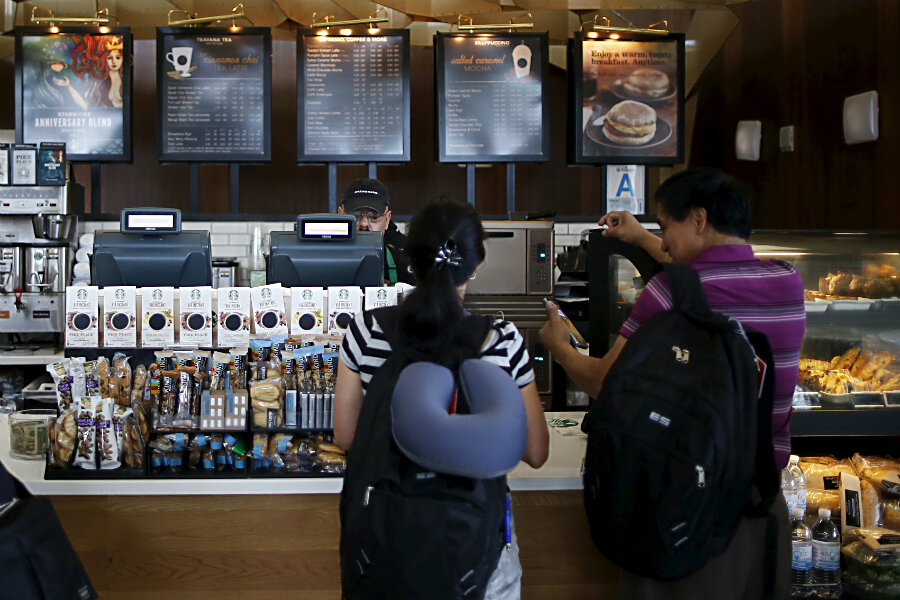An artist tries to create a beautiful image for food waste
Loading...
In Jean-François Millet’s 1857 painting “The Gleaners,” three women make their way through a cornfield to pick what harvesters have left behind, collecting and eventually making use of what would otherwise be wasted. It’s a piece of art notable for its dignified representation of peasant life, free, as the Musée d’Orsay notes, “of any hint of miserabilism.” In the food world, it’s also notable for being one of – if not the – most famous depictions of food rescue.
Contemporary Brooklyn artist Aliza Eliazarov is a modern food rescue artist working in the old traditions. Arranging loaves of day-old bread and bruised basil found on the sidewalks outside bakeries and markets at closing time in a style befitting 17th-century Dutch still-life paintings, she too is attempting to elevate the ordinary.
“I was trying to figure out how to show this food that gets wasted in this beautiful way,” Eliazarov said in an interview with TakePart. When Millet painted his gleaners, “the kind of food waste that exists today would have not existed. There was a reverence for food that we don’t have today.”
Her “Waste Not” project began in 2011 when a local paper assigned her an Earth Day story to trail a “freegan.” After dumpster diving at a market across from the Columbia University campus, her subject laid some of the rescued food on the sidewalk as a way to educate passersby on waste.
“That was very interesting to me. The number of people who were so confused about why that baguette or apple were thrown away and stopped to talk about it was really interesting. That really stayed with me and really got me interested in issues of food waste,” she said.
Using freegan directories, Eliazarov intercepts food shortly after it is carried to the curb in trash bags from grocery stores or bakeries and before it is picked up by garbage collection, preventing fewer items from contributing to the $165 billion of food wasted annually in the U.S. The streets of New York, she said, are lined with bags of bagels. Back in her home studio, she gives the food two new uses. First, she arranges the tableau; then she eats.
“I’ll make apple crisp or banana breads or bread crumbs or whatever. I try to avoid as much waste in that process as well,” she said. Her goal is to “illuminate that really beautiful food is going to waste all the time – beautiful, edible food.”
In the years since the project began, the topic of food waste has arrived both in the zeitgeist and at the grocery store. Just this month, Whole Foods announced a partnership with Imperfect Produce to begin selling “ugly” fruits and vegetables at a reduced price in some of its northern California stores; a new bill proposed by California Assemblymember David Chiu, a San Francisco Democrat, would be the first to standardize food packaging “sell-by” labels, potentially eradicating the confusion between quality and safety that leads consumers to chuck nearly $30 billion worth of food each year; and in a partnership with Feeding America and food collection group Food Donation Connection, Starbucks announced plans to donate 100 percent of its leftover food from more than 7,600 U.S. stores to food banks.
“This food is going to make a difference, whether it’s a child not going hungry for the night or a family that’s able to enjoy a protein plate that they would not have otherwise been able to afford at Starbucks,” Kienan McFadden, a store manager, said in an official statement from the company. “Rescuing food in this way from being thrown away will change lives.”
Yet, food rescue organizations often struggle against the perception that by “rescuing” rejected or soon-to-be-discarded foods, those in need should settle for eating at the lower end of the food chain. With lines out the door at Denmark’s new volunteer-staffed grocery store selling “expired food,” perhaps what’s in need of a reboot is our cultural perception of what would-be waste should look like.
“A huge stigma that all food rescue organizations try to get away from is that the food comes from the garbage,” Eliazarov said. “Because it does not come from the garbage at all. It comes directly from farmers and distributors and restaurants that donated to them. There’s a difference between food that is diverted from the trash and food that is found in the trash.”
Eliazarov’s project has grown beyond still lifes of food waste to working with food rescue organizations. She has photographed apple orchard gleaners with the Connecticut Food Bank and is also working with City Harvest, one of the first charities to take extra food off the hands of distributors and farmers in the supply chain and distribute it to the hungry. Last March, she photographed Dan Barber’s WastED pop-up restaurant.
“As it grows, my goal is to present a larger picture of what food waste and food rescue looks like in the U.S.,” she said.
• Sarah McColl has written for Yahoo Food, Bon Appétit, and other publications. She's based in Brooklyn.
• This article originally appeared at TakePart, a leading source of socially relevant news, features, opinion, entertainment, and information – all focused on the issues that shape our lives.





